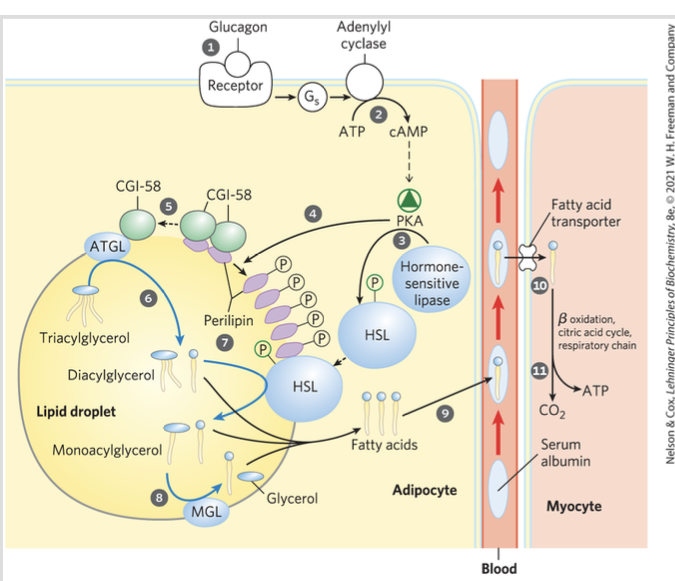FIGURE 17-2 Mobilization of triacylglycerols stored in adipose tissue.
1/10
Earn XP
Description and Tags
Mobilization of fats happens when hormones glucagon and epinephrine signal the need for metabolic energy, this triggers pka
Name | Mastery | Learn | Test | Matching | Spaced |
|---|
No study sessions yet.
11 Terms
Step 1
The blood glucose levels drop, glucagon is released. This hormone binds to (adipocytes), activating a G protein that stimulates adenylyl cyclase.
Remember - Imagine Glucagon as the city’s energetic mayor, knocking on the doors of fat warehouses (adipocytes) and activating a G-protein messenger, who races to flip the switch at adenylyl cyclase. Once flipped, energy signals (cAMP) start buzzing around the cell, ready to power the body
Step 2
This creates cAMP, which activates PKA,PKA then adds phosphate groups to proteins.
Rememmber -Picture PKA as a DJ at a glow-stick party, with cAMP invitations flying around to get things started. As proteins enter the dance floor, PKA hands them glowing phosphate sticks, activating them for the party (aka metabolic processes)! Picture PKA as a DJ at a glow-stick party, with cAMP invitations flying around to get things started. As proteins enter the dance floor, PKA hands them glowing phosphate sticks, activating them for the party
Step 3
pka phosphorlates the hormone-sensitive lipase (HSL) and perilipin proteins on the lipid droplet's surface.
Remember pka - PPicture PKA as a DJ on Lipid Island, handing glowing phosphate sticks to perilipin and HSL. Perilipin steps aside like a bouncer, while HSL starts grooving, breaking down fats into usable energy
Step 4
Phosphorylation of perilipin causes CGI-58 ( comparative gene identification) to separate from.
Remember - Picture CGI-58 and perilipinas party partners on Lipid Island. But as soon as perilipin gets a glowing phosphate stick from PKA, CGI-58 waves goodbye and teams up with ATGL to start burning fat!
Step 5
CGI-58, a protein linked to lipid droplets, pulls adipose triacylglycerol lipase (ATGL) to the droplet surface and boosts its lipase activity. (Active ATGL)
Remember - Picture CGI-58 as a hype crew member, pulling ATGL onto the stage (the lipid droplet surface) and giving it the boost it needs to perform its fat-burning act, dazzling everyone with its energy-releasing skills!
Step 6
active atgl converts triacylglycerols to diacylglycerols
Remember - magine active ATGL as a talented dancer performing a stunning routine, gracefully changing larger triacylglycerols into smaller diacylglycerols with each spin and leap. The crowd goes wild as the transformation occurs, making the party even more energetic!.
Step
It converts diacylglycerols into monoacylglycerols. Then, monoacylglycerol lipase (MGL) hydrolyze the monoacylglycerols.
Remember - Imagine active ATGL as a talented dancer performing a stunning routine, gracefully changing larger triacylglycerols into smaller diacylglycerols with each spin and leap
Step 8
A third lipase, monoacylglycerol lipase (MGL), hydrolyzes monoacylglycerols Fatty acids leave the adipocyte
Remember - imagine MGL as a talented DJ who plays the final track, cueing the monoacylglycerols to break down and gracefully exit the dance floor.
Step 9
Fatty acids exit the adipocyte and travel in the blood attached to serum albumin. They are released from albumin and enter a myocyte through a fatty acid transporter.
Remember - imagine the fatty acids as excited travelers boarding a cruise ship (serum albumin) and sailing through the bloodstream. Upon reaching the shore (myocyte), they use a special ramp (fatty acid transporter) to step off the ship
Step 10
in the myocyte oxidation of CO2 occurs, where energy is stored as ATP whch fuels muscle contractions along with Boxidation, citric acis chain, ans respiratory chain
REMEMBER - In the story, the myocyte is like a tiny factory where fatty acids are the workers. These workers are processed in the "oxidation chamber," where their energy is converted into ATP, the factory's power source. The ATP powers the factory’s machines, allowing muscle contractions and keeping other important processes running smoothly. So, whenever your muscles need to move, the factory burns fatty acids to produce ATP and keep everything functioning efficiently.
